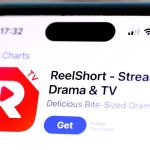“The single biggest problem with communication is the illusion that it has occurred.”
And that truth, deeply fundamental as it is, took none less than George Bernard Shaw to articulate.
Communication lessons from the classroom to the boardroom
I taught two graduate courses in leadership and executive communication – one in the MBA program and one in the MAS program at Fairleigh Dickinson University, from 2003 to 2018 – and Shaw’s observation never failed to stop us in our tracks. Indeed, it is an illusion. Whether we engage in casual small talk or a major presentation that took weeks or more to construct, we generally feel that the message we’ve sent was the message received.
Until, of course, you take apart what you believe is the communication process and look it – and yourself – straight in the face. That’s when you realize that what you thought was communication, wasn’t. Shaw was entirely right.
This is the point at which many people draw a faulty lesson they shouldn’t, namely that communication is, by necessity, a sophisticated function that is best delivered in a package of erudition and wrapped in eloquence.
On the contrary, although there are zillions of examples of that kind of high-level communication – from Shakespeare to Churchill, from Paine to Oppenheimer – there are far more that are equally or more effective for the simple reason that they tried to communicate, not obfuscate (Five-dollar word used purposely to support the point.
Seven Communication Tips
The effectiveness of communication depends on seven easy to understand fundamentals. Master these, and you should draw the right lessons on how to avoid that illusion Shaw identified.
Communication Tip #1: Simplicity
Communication is not an exercise in showing off your vocabulary skills from junior high school or your ability to construct compound-complex sentences. Keep ideas plain, text simple, and graphics (if necessary) clear. Avoid any and all natural tendencies to show off. Perhaps the greatest example of this is Martin Luther King’s immortal “I Have A Dream” speech put forward the simplest of all dreams.
Communication Tip #2: Brevity
When JFK was elected, he asked his trusted advisor and speechwriter Ted Sorenson to find the shortest inaugural speeches ever given. Without the advantage of MS Word Count, Sorenson returned the following: George Washington’s second (133 words), Abraham Lincoln’s second (699), Thoedore Roosevelt’s only (983), and FDR’s fourth (558). Pretty good company, I should think: three who are carved into Mt. Rushmore and one who should be. If anyone had anything to say, it was these four – and they did it in short – not to mention memorable – order. [For clarity, the paragraph you’re now finishing plus the nexr, are longer than Washington’s address.]
Kennedy’s speech came in at 1,364 words and about 22 minutes, much longer than his esteemed predecessors, but relatively short in the history of this ritual. He more than made up for that with his legendary “Ask not…” declaration, which is etched into American oratory annals.
In my course, students were required to do five papers and five presentations. Unlike many professor who though that size matters and, accordingly, assigned lengthy papers, I made one thing clear: any paper longer than four pages would be returned without a grade, and any presentation longer than seven minutes would need to be shortened.
In other words, get to the point, stay on point, and get off point. Simple.
Communication Tip #3: Bluntness
Dr. King’s speech was not only simple, it was also blunt – when it needed to be. In fact, the first few paragraphs were written in the highest of literary style, with a flowing lyric texture and an effortless volley of metaphors. But what do we remember? The literature of the speech’s beginning? Or “I have a dream,” “Now is the time,” and “Let freedom ring?” Not to mention the purposeful and relentless repetition of those refrains.
Communication Tip #4: Credibility
Can your message stand up to scrutiny? Is it believable in two regards? Can the receiver believe it? And does the receiver want to believe it? Rule of thumb: If what you’re saying is so blatantly obvious that it need no explanation – in an aphoristic way – then don’t explain it. But if it needs explanation, which may be your fault to begin with, then keep the effort as short as possible. It can take far less time to talk your way out of credibility than it did to build it.
Communication Tip #5: Authority
If you are recognized as an expert on your subject matter, then you have what’s called native authority. In other words, people will pay attention. They’ll read your material or listen to your presentation. But make sure to state your authority. I did: above. If you lack the native authority, on the other hand, borrow it. Cite recognized sources, quote leading figures, paraphrase and adopt long ideas where necessary. I did this, too. If you’ve got the authority, use it; if not, borrow it from the rite sources.
Communication Ti #6: Relevance
Let’s face it. If your audience, no matter the size – one person or a thousand – doesn’t care about your message, all your formidable skills so far will not matter. There are three possible scenarios: (1) Your every word is important and the receptivity will almost automatically be high, (2) You can manufacture relevance and get, probably, a tepid response, or (3) You may as well not bother.
Communication Tip #7: Feedback
With all your outbound skills intact, this one – inbound – equals them all. Design your communication to gauge receptivity. In a presentation setting, that’s almost an automatic. Keep an eye on your audience, encourage interaction, and talk to the whole audience. For written communication in today’s on-line world, feedback is easy to measure. Paying attention to it, though, is the thing.
Is communication an art or science?
As we covered in my class or in my corporate workshops, communication is both an art and a science. But t shouldn’t, according to Shaw, be an illusion.
Read the full article here









